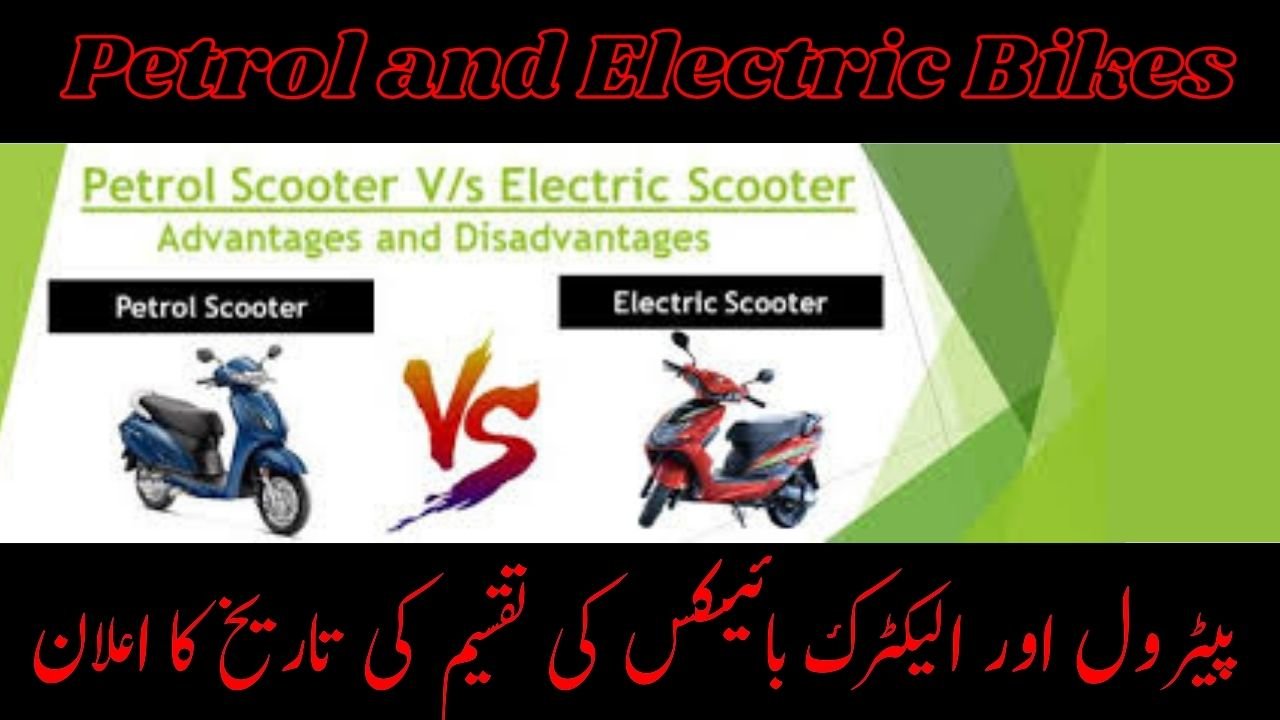Petrol and Electric Bikes
In a significant move towards promoting sustainable transportation and providing affordable mobility solutions, the Governor has announced the date for the distribution of petrol and electric bikes. This initiative aims to support a greener environment, reduce traffic congestion, and offer cost-effective transportation options to the public. With the growing concerns about environmental degradation and the rising costs of fuel, the introduction of electric bikes is particularly noteworthy. This comprehensive guide will provide all the details about the distribution process, the benefits of both petrol and electric bikes, and answer frequently asked questions (FAQs) related to this initiative.
Details of the Announcement
The Governor’s office has confirmed that the distribution of petrol and electric bikes will commence on August 1, 2024. This initiative is part of a broader strategy to modernize transportation infrastructure and promote environmentally friendly commuting options. The distribution will take place in multiple phases to ensure smooth and orderly allocation to eligible recipients.
Benefits of Petrol and Electric Bikes
Petrol Bikes
- Reliability: Petrol bikes have been a reliable mode of transportation for decades. They are well-suited for long-distance travel and areas with limited access to charging stations.
- Established Infrastructure: With a widespread network of petrol stations, refueling is convenient and quick, making petrol bikes ideal for regions with underdeveloped electric charging infrastructure.
- Performance: Petrol bikes typically offer higher speeds and better performance in terms of acceleration and handling, which can be advantageous in various terrains and conditions.
Electric Bikes
- Environmental Impact: Electric bikes produce zero emissions, significantly reducing the carbon footprint and contributing to cleaner air and a healthier environment.
- Cost-Efficiency: Electric bikes have lower operating costs compared to petrol bikes. Electricity is cheaper than petrol, and maintenance costs are generally lower due to fewer moving parts.
- Government Incentives: Many governments offer incentives such as tax rebates, subsidies, and grants for electric bike users, making them more affordable.
- Noise Pollution: Electric bikes operate quietly, reducing noise pollution in urban areas and contributing to a more peaceful environment.

Distribution Process
The distribution process will be managed in several phases to ensure fairness and efficiency. Here is a breakdown of the steps involved:
- Registration: Interested individuals need to register through the official government portal or designated centers. The registration process will require proof of identity, residency, and eligibility criteria, which may include income levels or specific demographic targets.
- Verification: The submitted applications will undergo a verification process to ensure the authenticity of the information provided. This step is crucial to prevent fraudulent claims and ensure that the benefits reach the intended recipients.
- Allocation: Based on the verified applications, the allocation of bikes will be carried out. Priority may be given to specific groups such as low-income families, students, or essential workers.
- Distribution Centers: Designated distribution centers will be set up across various regions to facilitate the handover of bikes. Recipients will be notified of the location and date for collecting their bikes.
- Training and Support: To ensure the safe and effective use of the new bikes, training sessions and support services will be provided. This will include information on bike maintenance, safety practices, and efficient usage of electric bikes.
Frequently Asked Questions (FAQs)
1. Who is eligible to receive a bike under this initiative?
Answer: Eligibility criteria will be outlined by the government and may include factors such as income levels, employment status, residency, and specific demographic targets. Detailed information will be available on the official registration portal.
2. How can I register to receive a bike?
Answer: Registration can be done online through the official government portal or at designated registration centers. Applicants will need to provide proof of identity, residency, and other required documents.
3. What documents are required for registration?
Answer: Required documents may include a government-issued ID, proof of residency, proof of income, and any other documents specified in the registration guidelines.
4. How will the allocation of bikes be decided?
Answer: Allocation will be based on the verification of applications and may prioritize specific groups such as low-income families, students, or essential workers. The exact criteria will be detailed in the official guidelines.
5. When and where can I collect my bike?
Answer: Recipients will be notified of the collection date and location after the allocation process is complete. Designated distribution centers will be set up across various regions for easy access.
6. What kind of training will be provided?
Answer: Training sessions will cover bike maintenance, safety practices, and efficient usage of electric bikes. These sessions aim to ensure that recipients can use their bikes safely and effectively.
7. Are there any costs involved in receiving a bike?
Answer: The government aims to provide these bikes at little to no cost to eligible recipients. However, there may be minimal administrative fees or costs associated with registration and training.
8. Can I choose between a petrol and an electric bike?
Answer: Applicants may be given the option to choose between a petrol and an electric bike based on availability and eligibility criteria. The preference will be considered during the allocation process.
9. What are the advantages of choosing an electric bike?
Answer: Electric bikes offer several advantages, including lower operating costs, environmental benefits, reduced noise pollution, and potential government incentives such as tax rebates and subsidies.
10. How do I maintain my electric bike?
Answer: Maintenance of electric bikes involves regular checks of the battery, motor, and electrical components. Proper storage and charging practices are also important to ensure the longevity of the bike.
11. What should I do if my bike requires repairs?
Answer: Support services and designated repair centers will be available for bike maintenance and repairs. Recipients can contact these centers for any repair needs.
12. Will there be any follow-up support after distribution?
Answer: Yes, follow-up support will be provided to ensure that recipients can effectively use and maintain their bikes. This may include periodic check-ins, additional training sessions, and access to repair services.
13. How does this initiative contribute to environmental sustainability?
Answer: By promoting the use of electric bikes, the initiative aims to reduce carbon emissions, decrease reliance on fossil fuels, and contribute to cleaner air and a healthier environment.
14. What impact will this initiative have on traffic congestion?
Answer: The introduction of more bikes, especially electric ones, can help reduce traffic congestion by providing an alternative to car travel. This can lead to smoother traffic flow and reduced commute times in urban areas.
15. Are there any incentives for using electric bikes?
Answer: Many governments offer incentives for using electric bikes, such as tax rebates, subsidies, grants, and reduced registration fees. Details of such incentives will be provided as part of the initiative.
Conclusion
The Governor’s announcement of the distribution date for petrol and electric bikes marks a significant step towards enhancing mobility solutions and promoting sustainable transportation. This initiative is expected to have far-reaching benefits, including reduced environmental impact, lower transportation costs, and improved access to efficient and reliable modes of transport. By providing detailed information and addressing common questions, this guide aims to ensure that the public is well-informed and prepared to participate in this transformative program.
